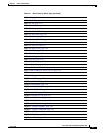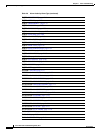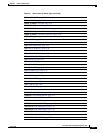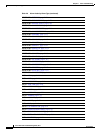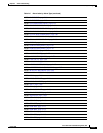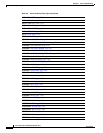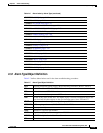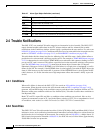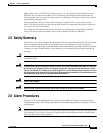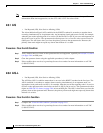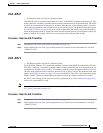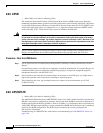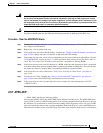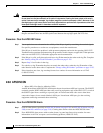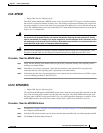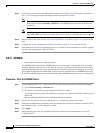
2-15
Cisco ONS 15327 Troubleshooting Guide, R3.4
March 2004
Chapter 2 Alarm Troubleshooting
Safety Summary
Minor alarms, such as the FSTSYNC alarm (see page 2-71), do not have a serious affect on service.
FSTSYNC lets you know that the ONS 15327 is choosing a new timing reference because the old
reference failed. The loss of the prior timing source is something a user needs to look at, but it should
not immediately disrupt service.
Telcordia standard severities are the default settings for the ONS 15327. A user may customize
ONS 15327 alarm severities with the alarm profiles feature. For alarm profile procedures, refer to the
Cisco ONS 15327 Procedure Guide.
This chapter lists the default alarm severity for the active reporting card, if applicable. The default
severity for alarms reported by standby cards is always Minor, Non-Service-Affecting.
2.5 Safety Summary
This section covers safety considerations designed to ensure safe operation of the ONS 15327. Personnel
should not perform any procedures in this chapter unless they understand all safety precautions,
practices, and warnings for the system equipment. Some troubleshooting procedures require installation
or removal of cards, in these instances users should pay close attention to the following caution and
warnings:
Caution Hazardous voltage or energy might be present when the system is operating. Use caution when removing
or installing cards.
Warning
Invisible laser radiation might be emitted from the end of the unterminated fiber cable or connector.
Do not stare into the beam directly with optical instruments. Viewing the laser output with certain
optical instruments (for example, eye loupes, magnifiers, and microscopes) within a distance of 100
mm might pose an eye hazard. Use of controls or adjustments or performance of procedures other than
those specified might result in hazardous radiation exposure.
Warning
Class 1 laser product.
Warning
Class 1M laser radiation when open. Do not view directly with optical instruments.
2.6 Alarm Procedures
This section list alarms alphabetically and includes some conditions commonly encountered when
troubleshooting alarms. The severity, description, and troubleshooting procedure accompany each alarm
and condition.
Note When you check the status of alarms for cards, ensure that the alarm filter icon in the lower-right corner
is not indented. If it is, click it to turn it off. When you are done checking for alarms, click the alarm
filter icon again to turn filtering back on.



